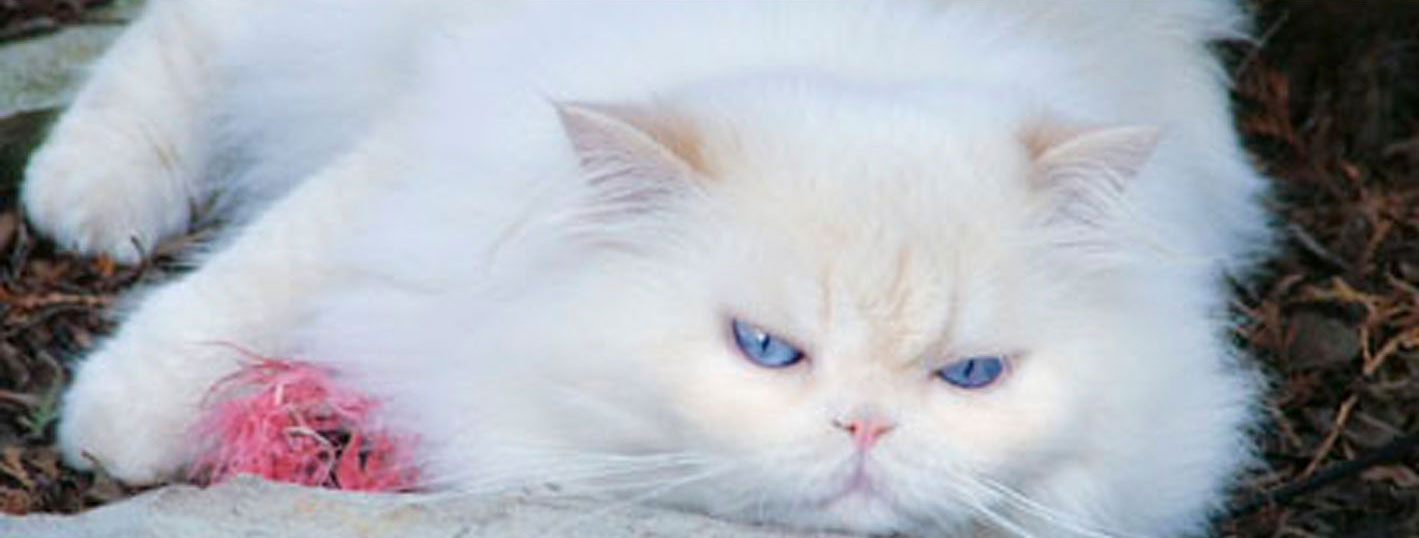
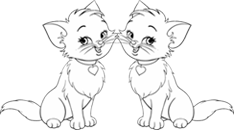
Persian Cat Breed Information Description & History
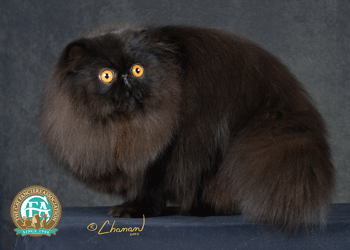
Persian Cats with their long flowing coats and open pansy-like faces are the number one breed in popularity. Persian Cats have sweet, gentle personalities that blend into most households once they feel secure in their new environment. Creatures of habit, Persian Cats are most at home in an atmosphere of security and serenity, but with love and reassurance, can easily adapt to the most boisterous of households. Their quiet, melodious voices are pleasant and non-abrasive. They communicate delightfully with their large expressive eyes and make charming pets for all ages. Persians have short heavily-boned legs to support their broad, short bodies. They like to have their feet firmly planted and are not given to high jumping and climbing. Playful but never demanding, they love to pose and will drape themselves in a favorite window or chair, enhancing the decor in much the same way as a treasured painting. Persian Cats are tremendously responsive and become a constant source of joy and delight to their owners. Pleasurable as an unexpected sunbeam, their companionship is close and enduring.
Persian Cats with their long flowing coats require proper maintenance. A daily run-through with a metal comb to eliminate the potential of tangles and hairballs is helpful. An occasional bath, attempted only after a complete comb-through and clipping of their nail tips, will keep the coat clean, healthy and beautiful. It is wise to establish a routine of bathing when they are young kittens.
Persians Cats are divided into seven color divisions for the purposes of competition. These divisions are established on the basis of color pattern. Red peke-face Persians Cats, with more extreme facial conformation, appear in both the Solid and the Tabby Division. Solid chocolate and solid lavender Persians Cats are known as the Kashmir in CFF. It is still called by this breed name in some older cat breed books.
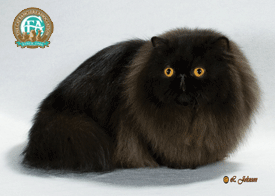
The Seven Persian Color Divisions:
Solid Colored Division of Persian Cats
~ Blues (copper eyes only)
~ Blacks (copper eyes only)
~ Chocolates (copper eyes only)
~ Reds (copper eyes
only)
~ Whites (copper, blue, or one blue & copper-called odd eyes)
In the Solid Division, only the pristine whites come in three different eye colors. Some have brilliant copper or deep blue eyes, others the surprising combination of one blue and one copper eye of equal intensity. The other solid colors have brilliant copper eyes.
The coat color for all solids should be sound to the roots and free from markings or shadings. Blues, once the apex of the breed, have been interbred with other colors to produce a more uniform type. Their pale silver-blue coats are most beautiful when viewed in natural lighting. Blacks have glossy patent finishes that glisten with intensity. Pale milk-colored creams are the dilute of the deep vibrant glowing reds. Chocolates and lilacs, introduced through the combination of Persian and Himalayan, are rarely seen. The chocolate demonstrates a warm chocolate-brown color while the lilac is a warm lavender with a pinkish tone.
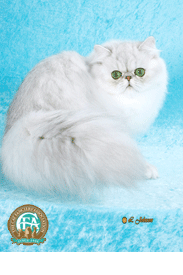
Silver & Golden Division of Persian Cats
The Silver and Golden Division consists of chinchilla and shaded silvers and goldens. The exquisite silvers are considered the most ethereal of all Persians. The chinchilla is a sparkling white cat with black tipping scattered as evenly as stardust, ever so lightly, on the face, legs, tail and body. Shadeds show a mantle of black on the back, shading evenly down the sides. The tipping on the legs and face should match and is darker than the chinchilla. Goldens are either chinchilla or shaded. Their ground color is a rich, warm cream tipped with black. Silvers and goldens have green or blue-green eyes rimmed with black, black paw pads and brick red or rose nose leather.

Persian – Shaded & Smoke Division
The Shaded and Smoke Division includes the shell and shaded cameos which have red tipping with a white undercoat. The cream shell and shaded cameos demonstrate a white undercoat tipped with cream. The shell and shaded tortoiseshells have a mantle of black tipping with well-defined patches of red tipped hairs while the shell and shaded blue-creams have blue tipping with well-defined patches of cream tipped hair. The smoke Persian is one of the most striking patterns of the Persian colors. There are six separate colors, black, blue, cream, cameo (red), smoke tortoiseshell and blue-cream smoke. In repose, the smoke appears to be a solid color cat. In motion, the coat will break open, giving glimpses of a startling white undercoat. All should have the characteristic white ruff and ear tufts. The perfect balance of undercoat to overcoat is transitory and the perfection of color balance can usually only be seen six to eight weeks annually. Their brilliant copper eyes seem almost like burning embers within the smoke setting.

Persian – Shaded & Tabby Division
The Tabbies are the extroverts of the Persian breed. They come in three patterns: classic, mackerel and patched tabby. The patched tabby may exhibit either the classic or mackerel pattern with the addition of patches of red. The classic tabby is identified by the bull’s eye markings on the side of the body while the mackerel pattern is characterized by narrow penciling encircling the body. The brilliantly contrasted markings can be as striking as an exotic jungle cat.Often referred to as the “fun’’ cat, tabbies are outgoing and demonstrative. Their facial markings give them a zesty added appeal. Recognized colors are silver, blue silver, red, brown, blue, cream, cameo and cream cameo. There are no patched tabby patterns in red, cream and cameo. All have brilliant copper eyes except silver varieties which also may have green or hazel.
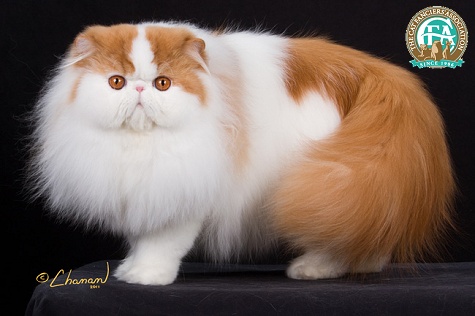
Persian – Particolor Division
TThe Parti-Color Division consists of the tortoiseshell, blue-cream, chocolate tortoiseshell and lilac-cream. The tortoiseshell is a black cat dispersed with great patches of red. A dividing blaze of color on the face adds interest to this brightly colored variety. The blue-cream, a delightful study in pastel, is a solid blue cat patched with cream. The muted coloring of the blue-cream and lilac-cream are as softly lovely as the tortoiseshell and chocolate tortie are flashy. All four colors have brilliant copper eyes.
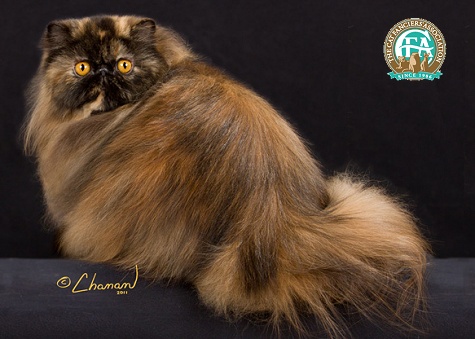
Persian – Bicolor Division
The Calico & Bi-Color Division consists of calicos, bi-colors, smoke and whites and tabby and whites. Calicos have white coats splashed with vivid patches of red and black, while the dilute calico is patched with blue and cream. The chocolate and lilac calicos have white coats splashed with vivid patches of chocolate and red or lilac and cream respectively. A van pattern is a white cat with color confined to the head and extremities. A maximum of two spots of color are allowed on the body. Bi-colors (black, blue, red, cream, chocolate or lilac with white) commonly exhibit white on the feet, legs, undersides, chest and muzzle. All established colors and patterns of tabbies with white and smokes with white are shown in this division. All have brilliant copper eyes except for the silver tabby with white which also may have green or hazel.
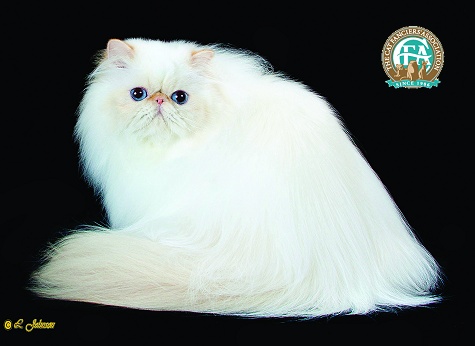
Persian – Himalayan Division
The Himalayan is one of the most popular of all Persians. The Himalayan is shown in the following point colors: chocolate, seal, lilac, blue, red, cream tortie, blue-cream, chocolate-tortie, lilac-cream, seal lynx, blue lynx, red lynx, cream lynx, tortie lynx, blue-cream lynx, chocolate lynx, lilac lynx, chocolate-tortie lynx and lilac-cream lynx. Color is restricted to the facial mask and extremities with the body of various shades of white to fawn. Himalayans were developed by breeding Persians to Siamese to combine the Siamese point coloring with Persian type. After many years of cross breeding they were approved as accepted color variations of Persians. All must have deep vivid blue eyes as eyes other than blue are a disqualification.
Persian Kittens Persian Cats Breed at The Persian Kittens ® =(^:^)=
top of persian kittens
